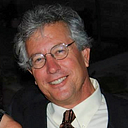The 1871 Chinese Massacre — One of the Worst Lynchings in U.S. History
By Ellie Kanda and Mansi Gokani (SMHS ‘19)
In our Honors United States History class textbook this past year, we read about “anti Chinese sentiment in America during the 1800’s.”
In this regard, the textbook described how in the late 1800s nativism (aka the favoring of native-born Americans over immigrants) was on the rise and how the discrimination that was so heartily intertwined with nativism found a new target in the later part of the 1800s — the Chinese.
In other words, as more and more Chinese immigrated to the U.S., Americans grew more and more distrustful of them, with this distrust giving rise to Chinatowns across America having to face massive acts of opposition and oppression (aka arson, vandalism, robbery, and lynchings.)
Worse yet, the government, rather than come to the aide of the Chinese, often turned a blind eye. It even went so far as to respond to the “sinophobia” (fear of Chinese) of the time by passing the Chinese Exclusion Act, legislation that prohibited the immigration of all Chinese laborers to the U.S.
After learning what appears above from our textbook, our teacher encouraged us to search the internet for evidence of anti-Chinese sentiment within 50 miles of our school. He then encouraged us to describe our findings in a 750–1000 word Local-History Blog Post.
In the Local-History Blog Post that appears below, Ellie Kanda and I describe the 1871 Chinese Massacre — the attack, robbery, and murder of Chinese residents living in the heart of Los Angeles by an angry and ugly mob of around 500 whites.
The site of the 1871 Chinese Massacre is located 13 miles from our school.
_______
The 1871 Chinese massacre was one of the worst lynchings of our nation’s history. Back in 1871, Los Angeles was still small, numbering only 6,000 people in population. Of those 6,000, only about two hundred were Chinese. Most of these people lived on the Calle de los Negros, named for the Spaniards who used to occupy the lane. Together, they formed a Chinatown of sorts.
In the initial days of Chinese immigration, attacks occurred infrequently, but the public view shifted negatively in the late 1860s. This tension between the white and Chinese population climaxed in the 1871 Chinese massacre.
Two rival Chinese businessmen were arguing over a woman, and a shootout ensued, resulting in the death of a white civilian aiding the responding police officers. The Chinese hid in the Coronel building, but were forced out by an angry white mob. This mob only grew in size and power, setting up gallows by turning wagons upright and lynching those unfortunate enough to be present. Eighteen men were killed; only one participated in the shootout.
While some of the rioters were put on trial, all charges were dropped on a technicality, leaving eighteen deaths unanswered for.
Despite the egregious nature of the massacre, local papers failed to cover it and, if anything, they only grew more scathing in their attacks on the Chinese
Commemorating the Massacre in Modern Times
Today, few know about the crimes that occurred in that Chinatown square. Even at our school, a school full of Chinese American students, very few, if any students, know of the massacre prior to their enrollement in the 11th-grade United States History course.
Click here to view a 4:31 video entitled “The Largest Lynching in US History.” This video highlights how the massacre has lost relevance over the years.
Today, in honor of those who died in the massacre, a plaque rests in the sidewalk in front of the Chinese American Museum. Unveiled in 2001, the plaque details the hardship and strife that the early Chinese lived through, both in English and Mandarin.
This plaque reads as follows
Chinese immigrants established their first community in Los Angeles in what is now part of El Pueblo de Los Angeles Historical Monument. By 1870 about two hundred Chinese had settled in Los Angeles Street across from the Garnier Building, then know as Calle de Los Negros.
Anti Chinese legislation and social discrimination greatly affected Chinese American families and their community life. On March 3, 1863, the California Legislature passed a statute prohibiting Asian Americans from testifying in court as witnesses or victims. The statue left them without legal protection. On October 24, 1871, a dispute between two Chinese rivals over ownership rights to a female prostitute resulted in the accidental shooting of a Caucasian. Fueled by the incident and general anti-Chinese sentiment, a mob of 500 locals shot, hung, and stabbed innocent Chinese residents.
While some policemen and citizens tried to help the residents, they could not defend the victims against the mob. At the coroner’s inquest, other policemen revealed that they found it pointless to arrest members of the mob, as the Chinese victims murdered were not protected under law. In the end, nineteen Chinese living on Calle de los Negros were murdered. In 1872, nine men were convicted of manslaughter and sentenced to terms in San Quentin ranging from two to six years each. On a technicality, the California Supreme Court overruled the decision in April 1873, and released the nine men.
SOURCES
The Americans. Reconstruction to the 21st Century. McDougal Littell, 2006.
“The Largest Lynching In US History.” Youtube, Buzzfeed, 27 Nov. 2017, www.youtube.com/watch?v=UpZZf7K12pU&t=1s.
Wallace, Kelly. “Forgotten Los Angeles History: The Chinese Massacre of 1871.” Los Angeles Public Library, 19 May 2017, www.lapl.org/collections-resources/blogs/lapl/chinese-massacre-1871.
ACADEMIC HONESTY POLICY STATEMENT
We both declare that this work is our own work and that we have correctly acknowledged the work of others. We further declare that this work is in accordance with SMHS Academic Honesty Policy and its guidance on good academic conduct and how to avoid plagiarism and other assessment irregularities.
- Mansi Gokani
- Ellie Kanda
